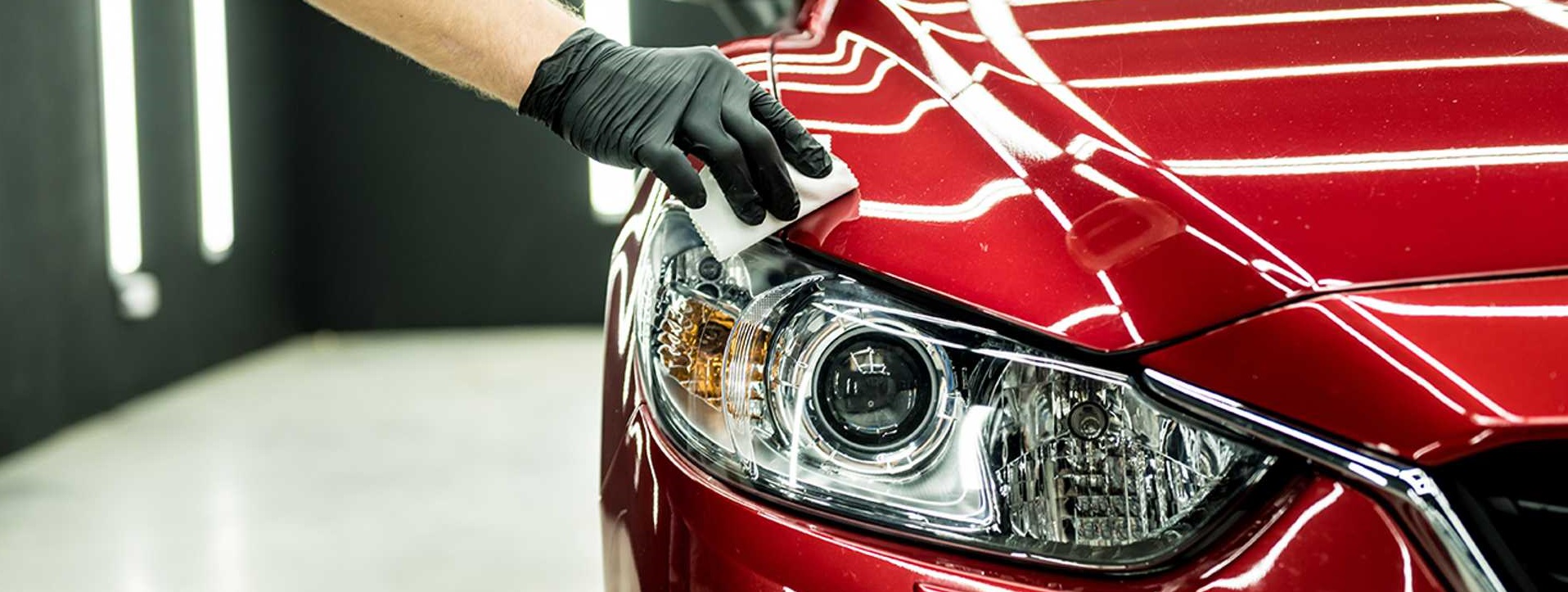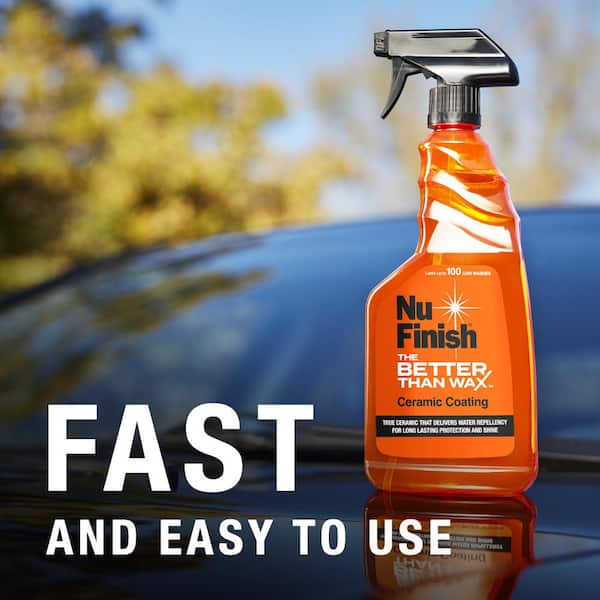Just How Ceramic Finish Provides Long-Lasting Security Against the Aspects
Ceramic layer has emerged as a powerful remedy for safeguarding surfaces versus diverse environmental challenges. The hydrophobic features of ceramic finishing further add to its effectiveness by warding off water and decreasing dust build-up.
What Is Ceramic Covering?
Ceramic layer is a sophisticated safety remedy that boosts the toughness and look of surface areas, especially in vehicle applications. This cutting-edge innovation contains a fluid polymer that chemically bonds with the factory paint of a vehicle, developing a protective layer that is substantially extra durable than typical wax or sealers.
Developed to offer long-lasting protection versus environmental impurities, ceramic finishings are immune to UV rays, chemical discolorations, and small abrasions. This security helps maintain the car's visual charm over time, preventing oxidation and fading that can arise from extended direct exposure to the aspects.
Moreover, ceramic layers are hydrophobic, meaning they drive away water and other liquids, which helps in the avoidance of dirt and grime buildup. This home not just makes cleaning easier but likewise adds to keeping the lorry's shine.
Readily available in different solutions, ceramic finishings can provide to various surface area materials, including glass and metal, expanding their applicability beyond just automotive uses. Generally, the fostering of ceramic layer technology represents a substantial innovation in surface area defense, providing an efficient remedy for those looking for to maintain the integrity and look of their financial investments.
Exactly How Ceramic Covering Works
The efficiency of ceramic covering exists in its one-of-a-kind chemical make-up and application process. Composed mainly of silica (SiO2) and other sophisticated polymers, ceramic finishings create a molecular bond with the surface of the product they are put on, generally automobile paint. This bond creates a semi-permanent layer that works as an obstacle against ecological pollutants.
Once applied, the coating undertakes a curing procedure, which can take several hours to days, depending on environmental problems. As it remedies, the layer sets and becomes hydrophobic, implying it repels water and other materials.

Advantages of Ceramic Coating
Supplying a wide range of advantages, ceramic finishing acts as an outstanding remedy for surface security. One of its key advantages is its toughness, supplying a durable barrier versus ecological pollutants such as dust, UV rays, and chemical exposure. This strength considerably prolongs the life expectancy of the surfaces it protects, minimizing the need for constant repair services or replacements.
Additionally, ceramic finishings enhance looks by imparting a glossy finish that maintains its shine over time. The hydrophobic residential properties of these coverings repel water, making it easier to tidy surface areas and decreasing the build-up of grime. This self-cleaning characteristic not only saves time but also improves the surface area's total appearance.
In addition, ceramic coverings provide resistance to scrapes and small abrasions, safeguarding the stability of the underlying materials. This is especially useful for automotive applications, review where maintaining an immaculate outside is important for resale value.

Contrasting Ceramic Covering to Typical Methods
Often, people seek effective services for surface defense, motivating a contrast between traditional approaches and ceramic coverings such as wax or sealants. Standard choices like wax offer a momentary layer of security, usually lasting a couple of weeks to a number of months, depending upon ecological conditions and car usage. While wax can enhance shine and offer a barrier against contaminants, its effectiveness decreases rapidly, needing constant reapplication.
In contrast, ceramic coverings provide an even more long lasting option, creating a solid, chemically bonded layer that can endure for numerous years. This resilient protection considerably decreases the requirement for routine maintenance, permitting car owners to delight in a continually sleek look without the headache of regular applications. Ceramic finishings are also a lot more immune to UV rays, chemicals, and physical abrasions, hence supplying remarkable defense versus the elements.
While traditional methods could be much more obtainable and much less pricey at first, the durability and effectiveness of ceramic layers provide an engaging case for those looking for extensive surface area defense. Ultimately, the selection in between conventional techniques and ceramic finishes depends on specific top priorities, such as time, spending plan, and desired level of security.
Upkeep Tips for Longevity
Comprehending the differences between traditional approaches and ceramic layers highlights the relevance of proper maintenance to maximize the longevity of my link ceramic coatings. Ceramic Coating Philadelphia. To guarantee the effectiveness of ceramic finishes, regular treatment is necessary
First, always clean the coated surface with pH-balanced car shampoos. Avoid severe chemicals or rough materials, as they can break down the finish. A mild hand laundry with microfiber towels reduces the threat of scrapes.
Second, think about the use of an upkeep spray designed especially for ceramic coatings. Ceramic Coating Philadelphia. This can boost hydrophobic residential properties and add a layer of protection, guaranteeing the layer continues to be efficient gradually
Third, prevent automated car cleans that usage brushes, as they can use down the layer. Instead, select touchless cleans or hand cleaning whenever feasible.
Last but not least, regular assessments for any kind of indications of damage or wear are crucial. Attending to issues immediately can stop a lot more considerable damages and keep the covering's integrity.

Conclusion
In summary, ceramic covering provides an awesome service for securing surface areas from ecological difficulties. Through its distinct structure and hydrophobic properties, it develops a resilient obstacle that safeguards versus UV rays, extreme temperatures, and chemical spots. The benefits of ceramic finishing prolong past simple aesthetics, dramatically decreasing upkeep efforts and enhancing resilience. By comparing it to conventional safety techniques, the superiority of ceramic finish ends up being evident, making it a favored option for lasting surface defense.
Understanding exactly how ceramic layers job is essential in valuing their role in surface security.
Supplying a plethora of advantages, ceramic finish offers as a remarkable remedy for surface area security.Regularly, individuals seek reliable solutions for surface protection, triggering a contrast between ceramic finishings and typical techniques such as wax or sealants.In recap, ceramic layer uses a powerful service for safeguarding surfaces find more from ecological obstacles. By comparing it to conventional protective techniques, the prevalence of ceramic finish ends up being obvious, making it a preferred selection for durable surface protection.